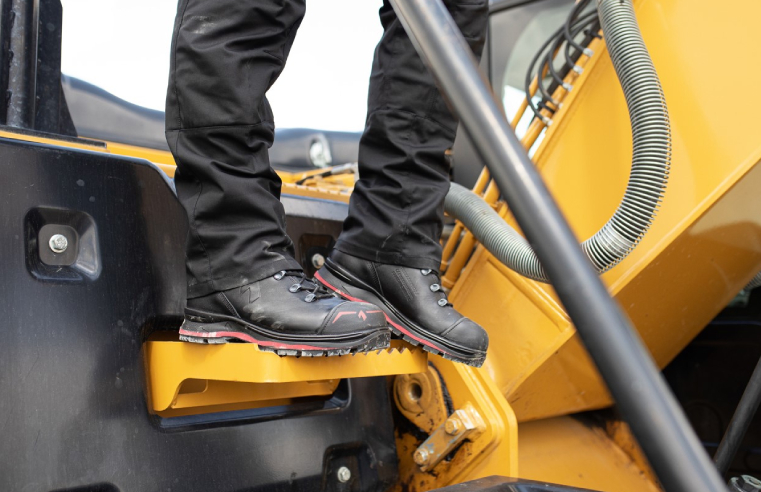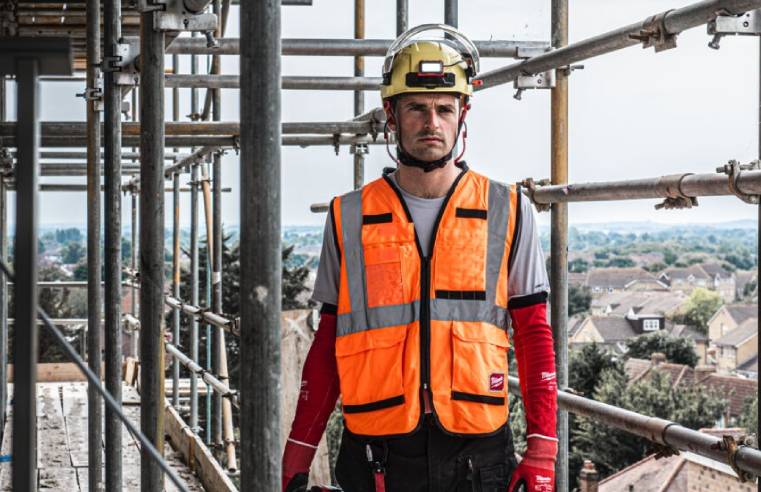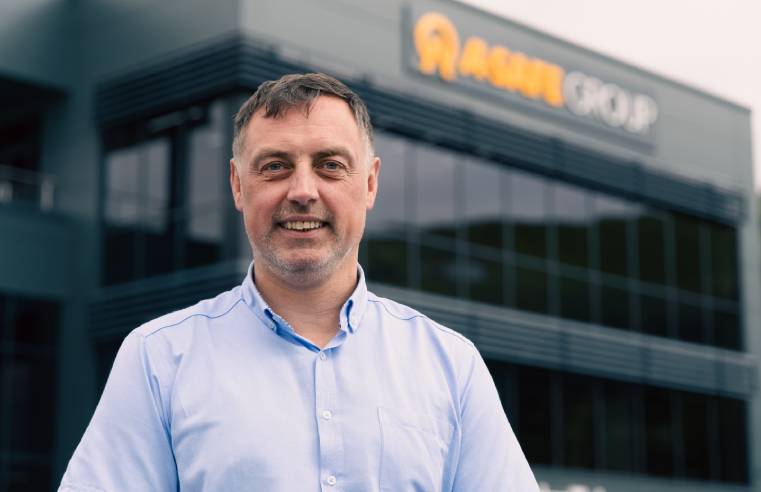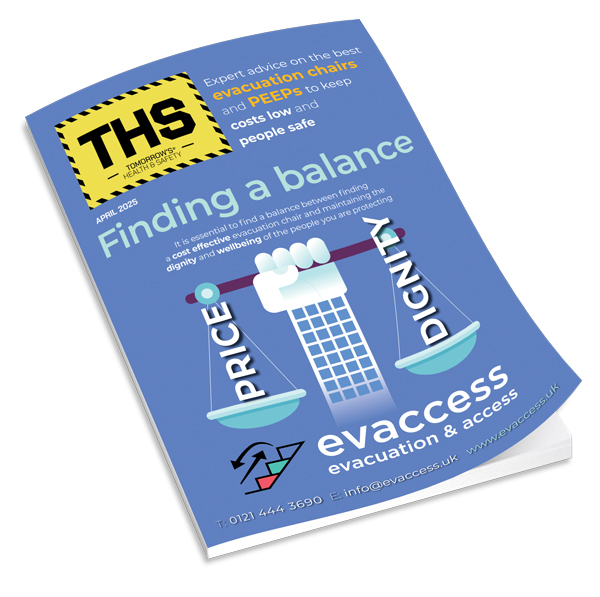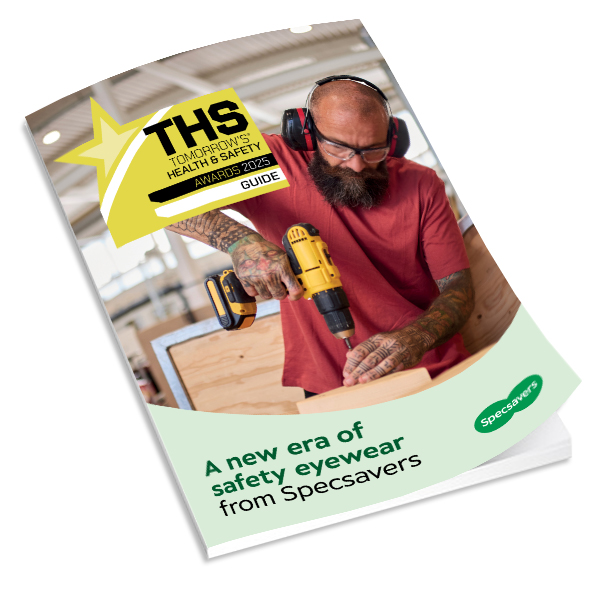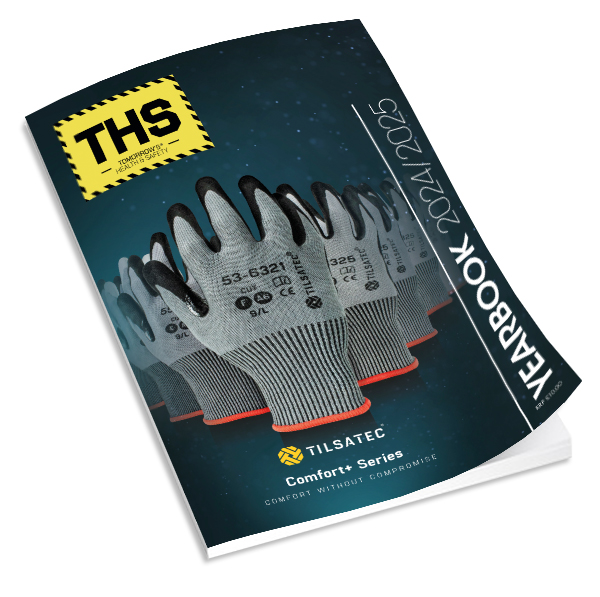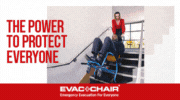This Rail Safety Week, Simon Ash, UK Sales Manager at HAIX, shares his expert opinion on the importance of equipping railway workers with appropriate and compliant PPE to mitigate the risk of accidents and injuries due to slips, trips and falls.
According to the 2022/23 Annual Health and Safety Report, the Rail Safety and Standards Board (RSSB) highlighted, that out of 83 specified injuries sustained by the mainline workforce, 50 were caused by slips, trips, and falls. Additionally, the report revealed 4,168 members of the railway industry suffered other injuries, an increase of 66 injuries compared to the previous year.
Given the inherent risks and hazards associated with railway work, such as moving trains, heavy machinery and high-voltage equipment, the safety and wellbeing of railway workers is a vital part of keeping the network running.
Navigating the causes and effects of slips, trips and falls
Railway workers, face a daily risk of slips, trips, and falls due to inadequate lighting, adverse weather conditions, obstacles, distractions, slippery surfaces on tracks and platforms, falls during maintenance tasks, and a lack of awareness of changing railway environments. Additionally, insufficient workwear and improper footwear heightens these risks, potentially leading to severe consequences.
Ensuring the safety of railway workers is also paramount for the efficient operation of the UK’s railway network. Accidents or injuries can lead to service disruptions, financial losses, and most importantly cause long-term harm to individuals.
Workforce health
Slips, trips, and falls can result in a spectrum of injuries, ranging from minor sprains and strains to severe fractures, head trauma, spinal cord damage, and even internal bleeding. Additionally, the psychological impact cannot be overlooked, potentially leading to anxiety, post-traumatic stress disorder (PTSD), and a fear of returning to work. Furthermore, these seemingly minor injuries can develop into significant health issues, such as musculoskeletal disorders, which is ranked among the top five reasons for sickness in the rail industry by the RSSB’s Health and Wellbeing Dashboard.
Service disruptions
Workforce absenteeism stemming from injuries and accidents places significant strain on the remaining railway personnel. An injured individual requires immediate medical attention and the incident itself will require thorough investigation, both of which can disrupt the regular flow of train schedules and operations. Additionally, slips, trips, or falls may cause damage to equipment, infrastructure, or railway property, mandating repairs or replacements that further impedes operational efficiency.
Financial losses
Slips, trips, and falls in the railway industry can also lead to financial losses, encompassing medical expenses of the injured, compensation claims, absenteeism costs, and operational disruptions. Fines for companies found in breach of Health and Safety regulations are increasing, with some employers paying over £1m for a workplace incident. The diversion of financial resources originally ringfenced for improving train operations towards legal expenses and the repairs and replacement of damaged equipment further compound the financial burden and compromise on safety improvements by the industry.
Importance of footwear to mitigate slips, trips, and falls
As part of improving workplace safety, the correct PPE footwear plays a significant role in preventing incidents from occurring. It is important that the PPE footwear selected is both compliant with the latest safety standards and is well-tested to maintain high quality standards. HAIX encourages opting for boots from accredited manufacturers that meet the stringent standards to help prevent accidents and foster a culture of safety and accountability.
When selecting an appropriate PPE footwear for the workforce, the railway company should ensure that the footwear has undergone a series of quality assurance tests, including tasks that simulate day-to-day challenges faced by workers who spend most of the day on their feet. It is essential to look for a footwear with slip-resistant properties, as guaranteed by the primary safety standards of:
• EN:ISO 20345:2011 – Safety Footwear
• EN ISO 20347:2012 – Occupational (Professional) Footwear
These certifications guarantee that footwear meets essential professional standards based on testing across various components such as upper, lining, tongue, outsole, insole, inlay sole, and the overall footwear. The latest revised update EN ISO 20345:2022, now Europe-wide, also includes updated tests for puncture and slip resistance, ladder grips, scuff caps, enhancing overall safety against slips and trips.
Given the impact of slips, trips, and falls injuries, prioritising workplace safety through preventative measures is essential in mitigating associated financial risks, maintaining operational efficiency and wellbeing of the workforce. By investing in safety training and providing workers with high-standard, compliant PPE footwear, the industry can effectively decrease absences, operational disruption and additional costs due to injuries and accidents, ultimately enhancing the overall health and wellbeing of the workforce.





